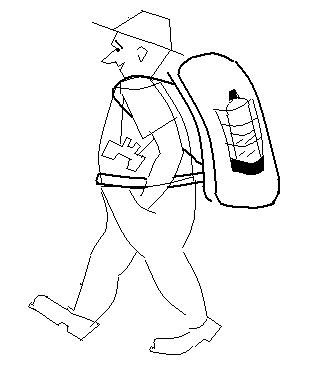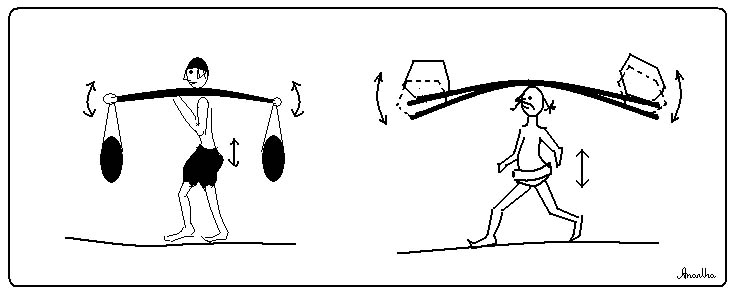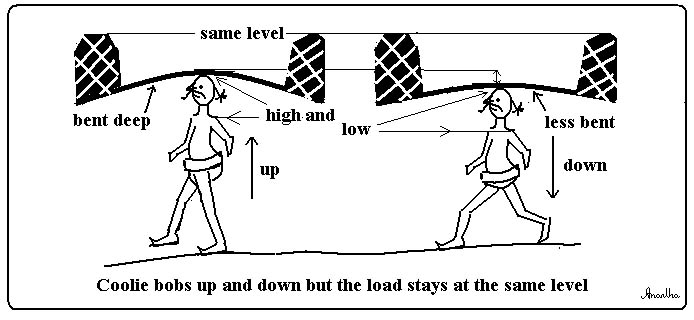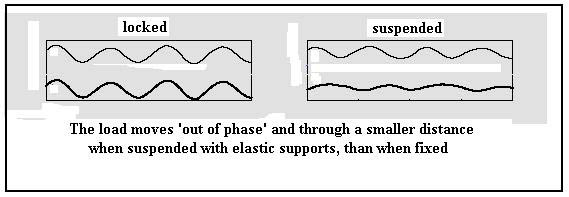Rhythm lightens the load
- S.Ananthanarayanan
Wildlife enthusiasts and trekkers, along with schoolchildren, have good news in a new, ergonomic way to carry loads, says S.Ananthanarayanan.
Prof Lawrence C Rome of the Univ of Penn, a biomechanics expert working with Marine Biological Laboratory, Mass, has provided elastic supports to the
load of the backpack, to even out the impacts of up-and-down movement. This is what, as many of us can affirm, wrecks havoc on the bones and muscles of shoulders and back, apart from the knees and ankles. The new design also reduces the energy needed to carry
the load and helps carry more or for longer.
Double whammy

In the traditional backpack, the load is rigidly fixed to the frame, which is then suspended on the shoulders and attacked to the waist. In normal walking,
the carrier rises and falls some 4 to 6 centimetres at each step. The load is then lifted by this distance and stopped in a fall through the same distance, at each step. The impact of the stop and lift is many times the load itself and soreness sets in within
minutes of setting out with anything but the lightest loads.
The other element is that for every pace of about 60 cms, there is a lift of 7 cms. So, if we walk 10 kms, we have lifted the load up more than a kilometer,
apart from moving the load forward. There is clearly something to be said for reducing how high the load needs to rise, and fall.
The Asian coolie
Like natural systems slip into the most efficient ways all by themselves, the traditional load carriers in our own part of the world had predated Prof
L C Rome of Pennsylvania.

The porters and coolies and
bhishties of India and south-east Asia suspend loads from an elastic, shoulder-carried cantilever or an elastic frame balanced on the head.
When the carrier takes a step, the lift of the shoulder/head is transferred to the load with a little delay, because of the elasticity, some of the force
being taken up in bending the lever, rather than lifting the load. When the shoulder or head descends, again, the impact of the load descending is insulated. This apart, the impact is less because the load descends through a smaller distance.
Rhythm
But the best thing is that dimensions of the support are such that the natural frequency of the rocking of the support matches the up-down movement of
the carrier, so that when the carrier is at the lowest level and just rising, the load is at the highest level and ready to descend, thus reducing the effort needed. And when the carrier is highest, and the load is lowest, the carrier is descending and the
deeply bent support is helping, by getting straightened, in lifting the load.
The energy for the work done by the support is also supplied, of course, by the carrier, but keeping the right rhythm evens out the effort to be exerted
and reduces the impact of stopping and jerking up the load. A skilled worker can even adjust his speed and eliminate impact by keeping the load at the same level throughout!

Ergonomic backpack

Prof L C Rome and MBL, Mass suspend the backpack load from the frame with elastic cords, the rope used for bungee jumping. When the hiker takes a step, then, the load does not rise with her, but stays put, while
the rubber stretches. It eases up as she reaches the highest point and keeps going, but never reaches as high as she did. And while descending, again, the load does not come to stop with a thud, but slower. And as the hiker has started rising, the load does
not go down as low as the hiker.
“While walking at 6.5 kmph, the vertical oscillation of a 27 kg load is reduced from 68.5 mm in the locked backpack to 26.5 mm in the suspended backpack”, says Prof. Rome in a communication published in
Nature in Dec 2006. “The metabolic cost of walking with the load falls from 640 W for the locked backpack to 600 W”, he adds.

This may not seem like a lot, at first, but it represents a 23% saving in the extra effort required for a grown man, who may weigh 70 kg, to walk with a 27 kg load as compared to without one. And this is apart from
the reduced orthopaedic and muscular trauma with the fixed load!
[the writer can be contacted at simple_science@indiatimes.com]